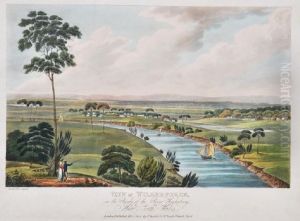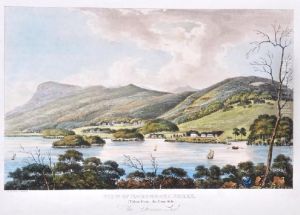John Lycett Paintings
John Lycett was a British artist known primarily for his work in Australia during the early 19th century. His exact birth date is not well-documented, but it is believed he was born around 1775. Lycett's life took a significant turn when he was convicted of forgery in England and subsequently transported to Australia as a convict in the early 19th century, arriving in New South Wales around 1814. Despite his convict status, Lycett's artistic talents were recognized and utilized in the colony, offering him a unique opportunity to document the landscape, flora, fauna, and Indigenous peoples of Australia during a period of significant change and colonization.
During his time in Australia, Lycett produced a wide range of works, including sketches, watercolors, and engravings, that provide valuable insights into the early years of European settlement in Australia. His detailed illustrations were among the first to depict various aspects of Australian natural history and colonial life for audiences back in Europe, serving both as scientific records and promotional materials encouraging further settlement.
Lycett's most notable work is perhaps 'Views in Australia or New South Wales, & Van Diemen's Land Delineated,' published in 1824 and 1825. This collection of views is significant for its artistic quality and for providing a detailed visual record of early 19th-century Australia. The publication featured a series of engraved plates based on Lycett's paintings, showcasing landscapes, settlements, and scenes of daily life in the colony.
Despite his contributions to Australian art and history, Lycett's career was not without controversy, largely due to his past and the circumstances of his arrival in Australia. After receiving a conditional pardon, he eventually returned to England, where he continued to work until his death in 1828. Today, John Lycett's works are held in high regard, housed in various public collections, including the National Library of Australia and the State Library of New South Wales, where they continue to be studied and appreciated for their historical and artistic value.

